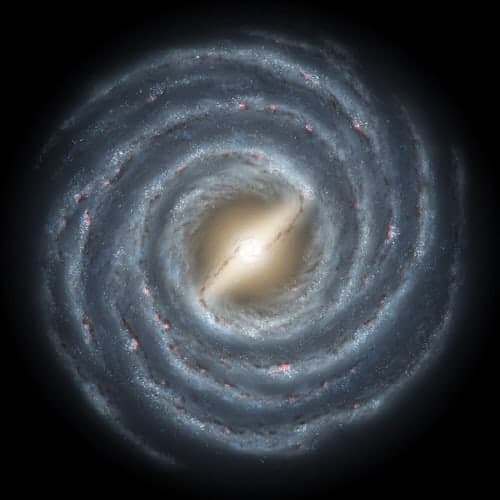Astronomers have made the most accurate measurement ever of the distance from the Sun to the Milky Way's nearest spiral arm, known as Perseus. They estimate the distance to be about 5.86 x 1016 kilometres (around 6,198 light years), which is more accurate by an order of magnitude less than previous calculations. The result resolves a long-standing discrepancy between two different techniques for measuring distances in the Milky Way and could also help us improve our understanding of how such spiral arms form (Sciencexpress 1120914).

The Milky Way is believed to contain either two or four spiral arms that swirl out from the galaxy’s centre. Previous measurements of the distance from the Sun to the Perseus arm were made using two methods. The first relies on measuring the apparent luminosity of massive young stars. The other “kinematic” method involves comparing the rotation speed the Sun with that of an object inside the Perseus arm, and then combining the difference between the two values with a model for the rotation of the Milky Way itself. However, these two methods produced very different results.
Now, Mark Reid of the Harvard-Smithsonian Center for Astrophysics in Massachusetts and colleagues in China and Germany have measured the distance from the Sun to a star-forming cluster in the Perseus arm called W3OH. Their value of about 5.86 x 1016 kilometres agrees with results obtained by luminosity techniques but is 10 times more accurate. The distance is also much shorter than that obtained by kinematic measurements, which produce values of around 1.32 x 1017 kilometres (about 13,962 light years).
The team made their measurement using the Very Long Baseline Array (VLBA) – an array of ten radio telescopes spanning the Earth from Hawaii to New England to the Virgin Islands – and a technique called “triangulation”. This method, which is similar to that used by ground-based surveyors, uses the Earth’s orbit around the Sun as one leg of a triangle. By then measuring the change in angle of W3OH from its average position over a year, the researchers can calculate the distance to W3OH by simple trigonometry.
The results also show that stars in the Perseus arm have unexpectedly large motions and move in ways that are beyond the simple rotation of the Milky Way around its centre. “Studies such as ours are the first steps to accurately mapping the Milky Way,” says Reid. “We are now embarking on a large project to measure the distances to a dozen regions of star formation spread across several spiral arms in our galaxy. In addition, we hope to use our data to better understand how spiral arms form.”



